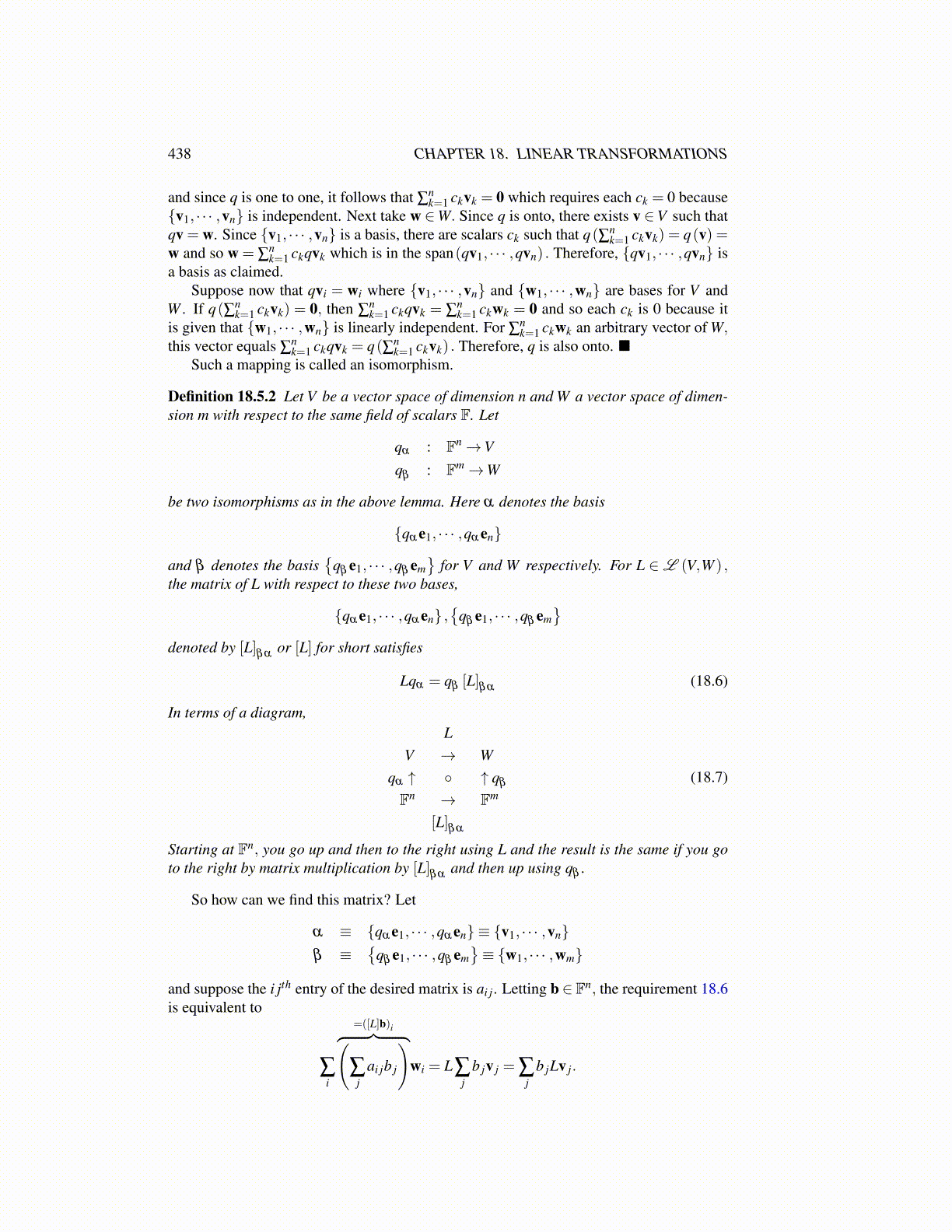
438 CHAPTER 18. LINEAR TRANSFORMATIONS
and since q is one to one, it follows that ∑nk=1 ckvk = 0 which requires each ck = 0 because
{v1, · · · ,vn} is independent. Next take w ∈W. Since q is onto, there exists v ∈V such thatqv = w. Since {v1, · · · ,vn} is a basis, there are scalars ck such that q(∑n
k=1 ckvk) = q(v) =w and so w = ∑
nk=1 ckqvk which is in the span(qv1, · · · ,qvn) . Therefore, {qv1, · · · ,qvn} is
a basis as claimed.Suppose now that qvi = wi where {v1, · · · ,vn} and {w1, · · · ,wn} are bases for V and
W . If q(∑nk=1 ckvk) = 0, then ∑
nk=1 ckqvk = ∑
nk=1 ckwk = 0 and so each ck is 0 because it
is given that {w1, · · · ,wn} is linearly independent. For ∑nk=1 ckwk an arbitrary vector of W,
this vector equals ∑nk=1 ckqvk = q(∑n
k=1 ckvk) . Therefore, q is also onto. ■Such a mapping is called an isomorphism.
Definition 18.5.2 Let V be a vector space of dimension n and W a vector space of dimen-sion m with respect to the same field of scalars F. Let
qα : Fn→V
qβ : Fm→W
be two isomorphisms as in the above lemma. Here α denotes the basis
{qα e1, · · · ,qα en}
and β denotes the basis{
qβ e1, · · · ,qβ em}
for V and W respectively. For L ∈L (V,W ) ,the matrix of L with respect to these two bases,
{qα e1, · · · ,qα en} ,{
qβ e1, · · · ,qβ em}
denoted by [L]βα
or [L] for short satisfies
Lqα = qβ [L]βα(18.6)
In terms of a diagram,L
V → Wqα ↑ ◦ ↑ qβ
Fn → Fm
[L]βα
(18.7)
Starting at Fn, you go up and then to the right using L and the result is the same if you goto the right by matrix multiplication by [L]
βαand then up using qβ .
So how can we find this matrix? Let
α ≡ {qα e1, · · · ,qα en} ≡ {v1, · · · ,vn}β ≡
{qβ e1, · · · ,qβ em
}≡ {w1, · · · ,wm}
and suppose the i jth entry of the desired matrix is ai j. Letting b ∈ Fn, the requirement 18.6is equivalent to
∑i
=([L]b)i︷ ︸︸ ︷(∑
jai jb j
)wi = L∑
jb jv j = ∑
jb jLv j.